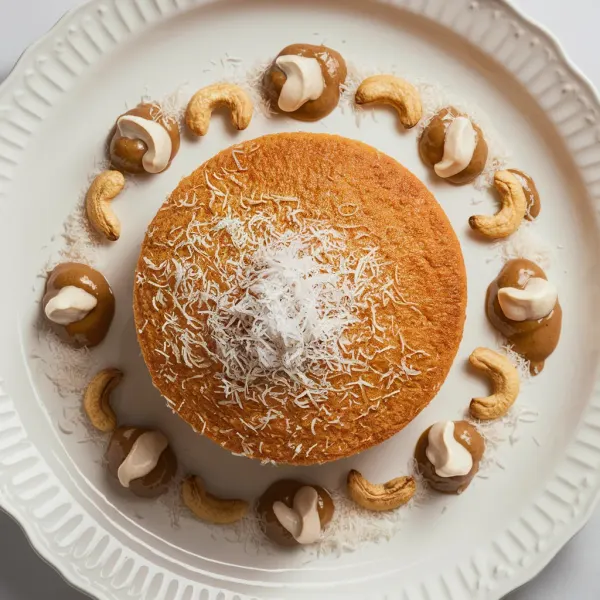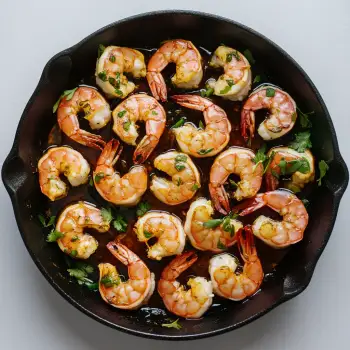
 80 minutes
80 minutesA rich and aromatic dessert made with toasted semolina, coconut milk, and a hint of sweetness, perfect for a delightful treat.


Semolina Flour, toasted
cups
Light brown sugar, packed
cups
teaspoons
Coconut Milk, canned or fresh
cups
Water, lukewarm
cups
tablespoons
Golden Raisins, optional
tablespoons
Almonds, thinly sliced, optional
tablespoons
1. Toast Semolina
Begin by toasting the semolina flour in a heavy skillet over medium heat. Stir it continuously until it becomes aromatic and turns a beautiful golden brown, which usually takes a few minutes. This step is crucial as it enhances the nutty flavor of the semolina. Once toasted, transfer the semolina to a bowl.
2. Mix Ingredients and Rest
Mix the toasted semolina with the light brown sugar, salt, coconut milk, and lukewarm water. Stir everything together until well combined, then set the mixture aside for 20 to 30 minutes. This resting period allows the semolina to absorb the liquid and the flavors to meld together, resulting in a richer, more cohesive batter.
3. Preheat Oven and Grease Pan
While the batter is resting, preheat your oven to 350°F (175°C) with the center rack positioned. Grease a 6-inch cast-iron skillet, cake pan, or pie pan to prepare it for baking.
4. Cook Batter
In a heavy skillet or wok, heat the butter or peanut oil over medium heat. Once the butter has melted or the oil is hot, add the batter to the skillet. Cook the mixture for about 20 minutes, stirring frequently with a wooden spoon. During this time, the batter will thicken and become sticky, indicating that the semolina is absorbing the liquid properly. If you like, you can stir in the golden raisins at this point.
5. Bake the Cake
Pour the thickened batter into the prepared pan and sprinkle the top with thinly sliced almonds if you choose to use them. Place the pan in the preheated oven and bake for about 20 minutes. The cake is done when a skewer inserted into the center comes out clean, showing that it has set properly.
6. Cool and Serve
Once baked, let the cake cool in the pan for a couple of hours. This cooling period is essential as it allows the texture to firm up, making it easier to slice and serve. Enjoy your Burmese Coconut Semolina Delight as a delicious treat!
The aroma and flavor of the semolina are enhanced by toasting it until it's a light golden brown. Be vigilant and stir constantly to prevent burning. This step develops a deep, nutty flavor that is integral to the dish.
Bake until the top is golden and the edges start to pull away from the sides of the pan. This indicates that your dessert is cooked through without being overdone.
Allow the Sanwin Makin to cool completely in the dish before cutting into pieces. This resting period helps the cake to set and flavors to meld together.
Use the best quality semolina you can find—preferably fine semolina for a smooth texture. Also, opt for freshly grated coconut or high-quality unsweetened desiccated coconut and full-fat coconut milk for the richest taste.
When adding the coconut milk and water, do so gradually and stir constantly to prevent lumps from forming. This technique results in a smooth and creamy consistency which is crucial for the final texture of the cake.




Comments (0)